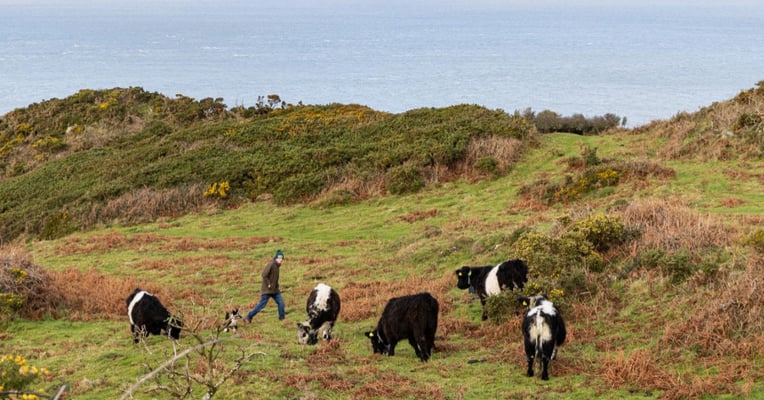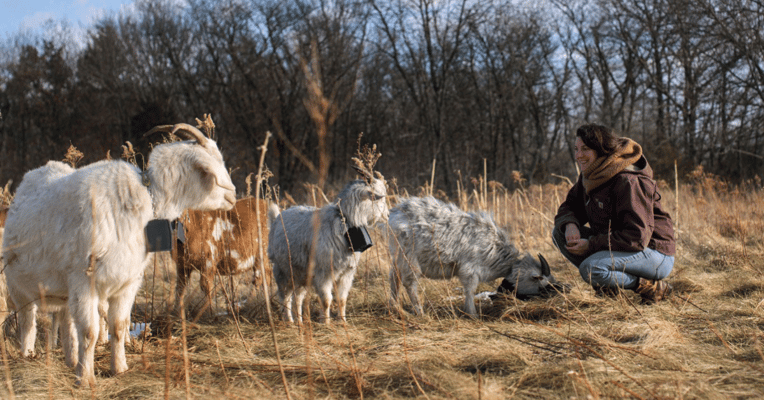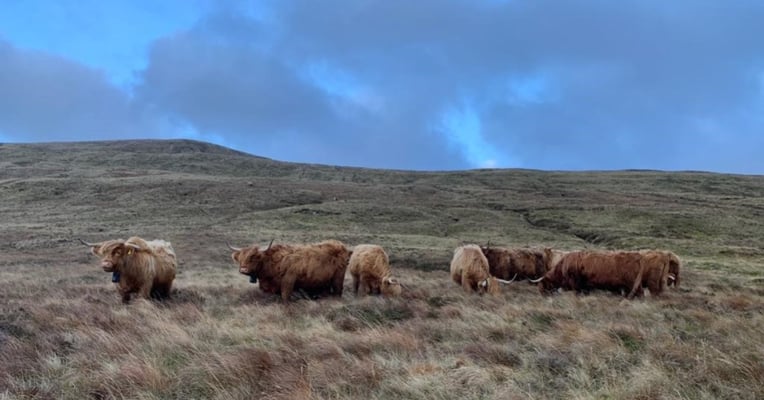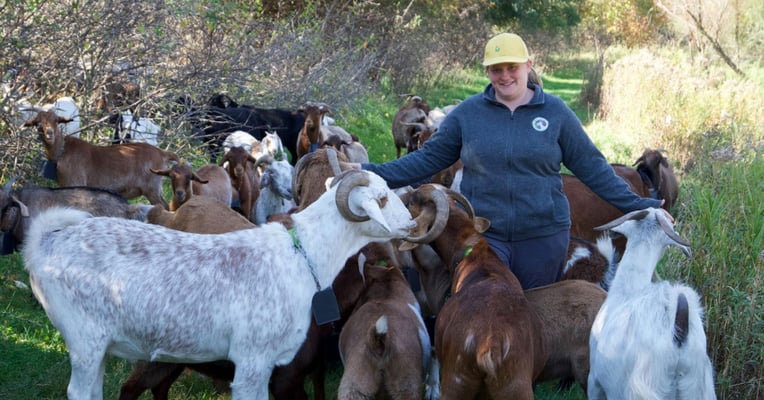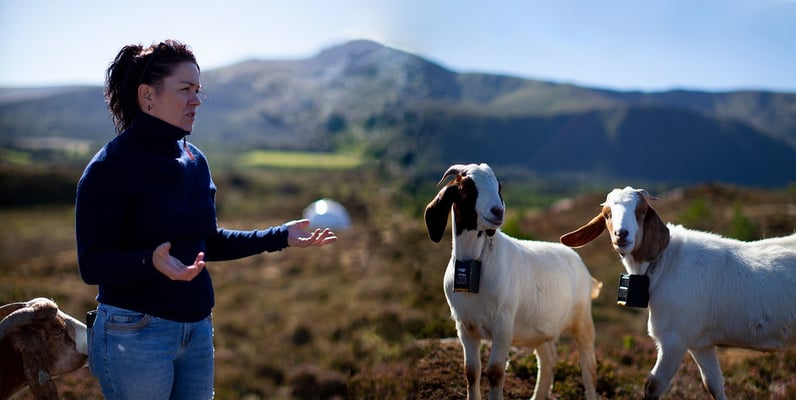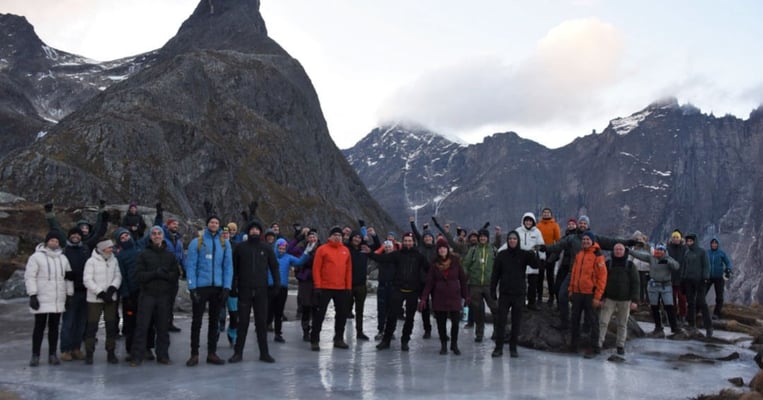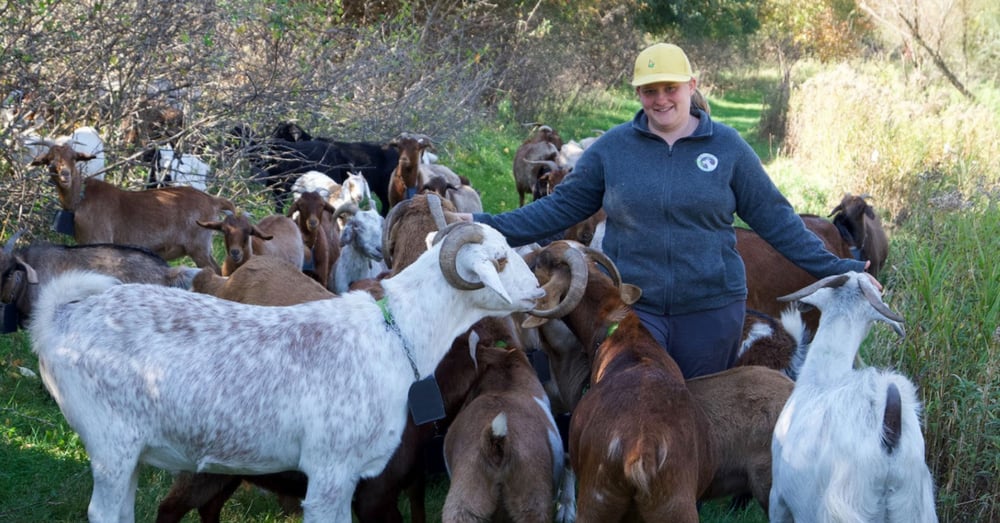
The Munch Bunch

What if there was a fun, sustainable, and labor-free way of clearing invasive plants and weeds? Better yet, what if the solution included animals and virtual fencing? Time to meet the Munch Bunch, the herd of goats for whom America's overgrown parks, farmlands, and backyards are dinner.
In the beginning..
What began in 2015 with two animals who refused to eat buckthorn has since sprouted into a 200-goat, wildly popular goatscaping business. Founders Allysse and Dan Sorensen from Minnesota credit their success to a desire within the community to work together with nature.
“People don’t want to hire someone to go in with machinery or chemicals; they want it done in a good way, you know?” Allysse says. “They want to create their own little green space in the world, something they can be proud of. So we bring in the goats. It’s fun, safe, and people get to enjoy watching animals in their backyard or a city park. The kids love it. And then there are the benefits to the land.”
Already ready to hire goats but live elsewhere? Check out www.hiregoats.com.
The benefits
The reason goatscaping has so many names (targeted grazing, conservation grazing, regenerative grazing, to name a few) is that there are so many benefits, but the way it works is generally the same: hire some goats, lean back, and enjoy the show as a bunch of animals munch away all the buckthorn, poison ivy, exotic honeysuckle, or whichever particular weeds have invaded your land. All the benefits, none of the work. But the true value of grazing is that it addresses the symptoms and the cause.
“With cutting or chemicals, you’re not addressing the soil issue,” Allysse explains. “But with goats, you are.”
Strictly speaking, the soil “issue” is not an issue in and of itself. It just happens to be the perfect conditions for growing weeds, shrubbery, or trees and the wrong conditions for grass, herbs, and other native plants that depend on biodiverse, bacteria-based soil. If your goal were to grow the former, it would be ideal. But for real, long-term change into the latter, you need grazing ruminants. So how does it work?
The process
Step one is the grazing itself. The area begins to open up as the invasive plants are weakened, and fewer weeds result in more sunlight reaching the soil. However, the long-term change only starts after the plants have been recycled in the animals' digestive systems and come out the other end as droppings.
“You want the droppings,” Allysse says with a smile. “Some people can get a bit hesitant when they hear that, but I think they imagine a big cow pie. It’s just little pellets.”
While they may be small, these pellets provide crucial nutrients for bacteria and insects, which in turn leads to a transformation of the soil that makes it perfect for grass, herbs, and native plants.
In other words, the droppings are an essential part of the process if you want to avoid the same invasion of weeds next year and the year after that, every year until the cows come home. With cutting and chemicals, there is no endpoint. With grazing, there is. This is of particular value for local government—the custodians of our shared greenery—who are often forced to spend valuable taxpayer money on never-ending maintenance.
But if goatscaping is so great, why isn’t it mainstream already?
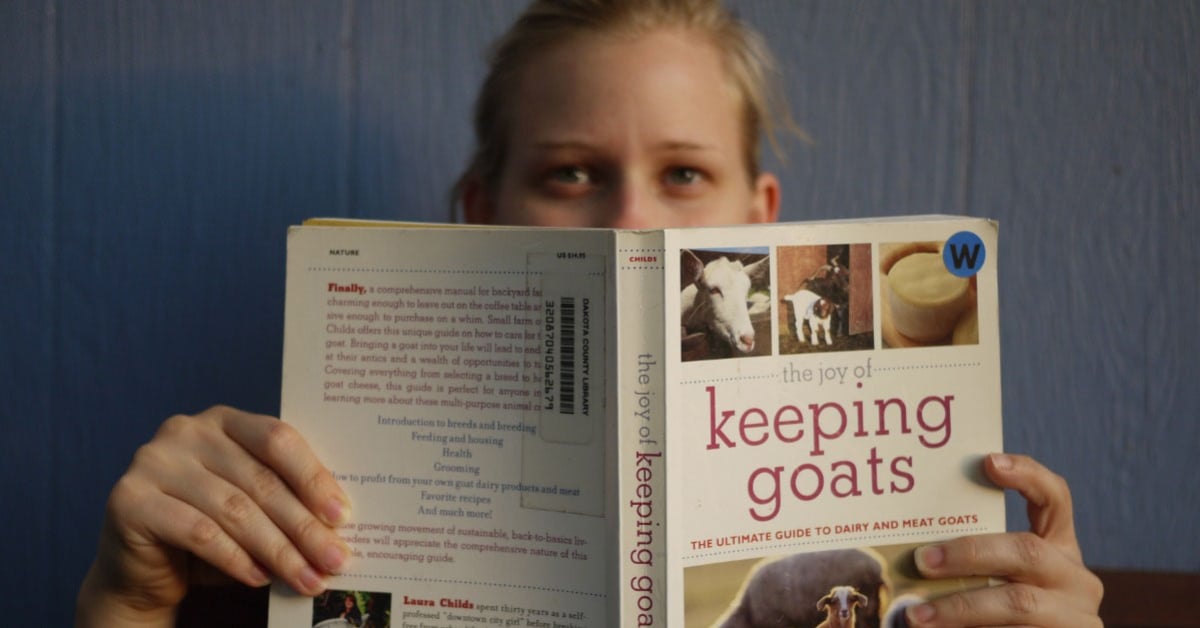
Allysse Sorensen, Founder of the Munch Bunch.
The challenges
One of the main challenges is that goats are nimble and curious. They will escape if given a chance, and while it’s great that they can traverse tricky terrain with ease and graze sensitive areas such as a Norwegian nature reserve without doing any damage, securing them can be a full-time job at the best of times. Not only are electric net fences and herd dogs costly and time-consuming tools to use, but they can also be impossible to implement in places.
“The sad reality is that traditional conservation grazing is unlikely to happen in some areas that most need it, and each new site has its terrain challenges,” Allysse says.
However, the Munch Bunch can now enter these areas with the aid of Nofence. “The new Norwegian technology has allowed me to take on requests I would have otherwise rejected, in addition to significantly improving my daily operation.”
No more "dirty jobs"
“To say that Nofence is a game-changer is an understatement. Before, my life was like an episode of Dirty Jobs. Imagine setting up, moving, and maintaining electric fence nets for 200 goats across six different sites. Now imagine they escape. We were always on-call in case of an emergency.”
Today, Allysse has complete control of her goats and can enjoy some well-earned peace of mind knowing her animals are munching safely where they’re supposed to—even on the rare occasion when one does escape the virtual pasture.
“I’ve had to redefine what I consider an escape,” Allysse explains. “In the past, I needed to travel to the site, find and return the animals, and fix the fence so it didn’t happen again. Now, they return to the herd. If you don’t have to act, does it even qualify as an escape?”
The goats return to their virtual pasture by themselves, and the local wildlife is free to traverse their natural habitats without artificial and potentially dangerous barriers in the way.
“It wasn’t a regular thing, but we did lose wildlife to our electric fences. It was always a sad feeling. Goatscaping was this cool ecological thing, yet it was still disruptive for the local animals. Now, they all share the land.
”In summary, goatscaping is the best long-term solution for dealing with weeds and invasive plants, especially in rugged terrain; it’s good for the soil, the native plants, the goats, wildlife, insects, and fungi. Not to mention, it is good fun.
In the end..
Allysse is not alone in discovering the benefits of virtual fences, and we are receiving requests about Nofence from all over the world. We are currently establishing hoof-holds in the US and Spain—an expansion in which Allysse will participate as part of the US Sales & Marketing team. To read more about Allysse joining Nofence, click here.
